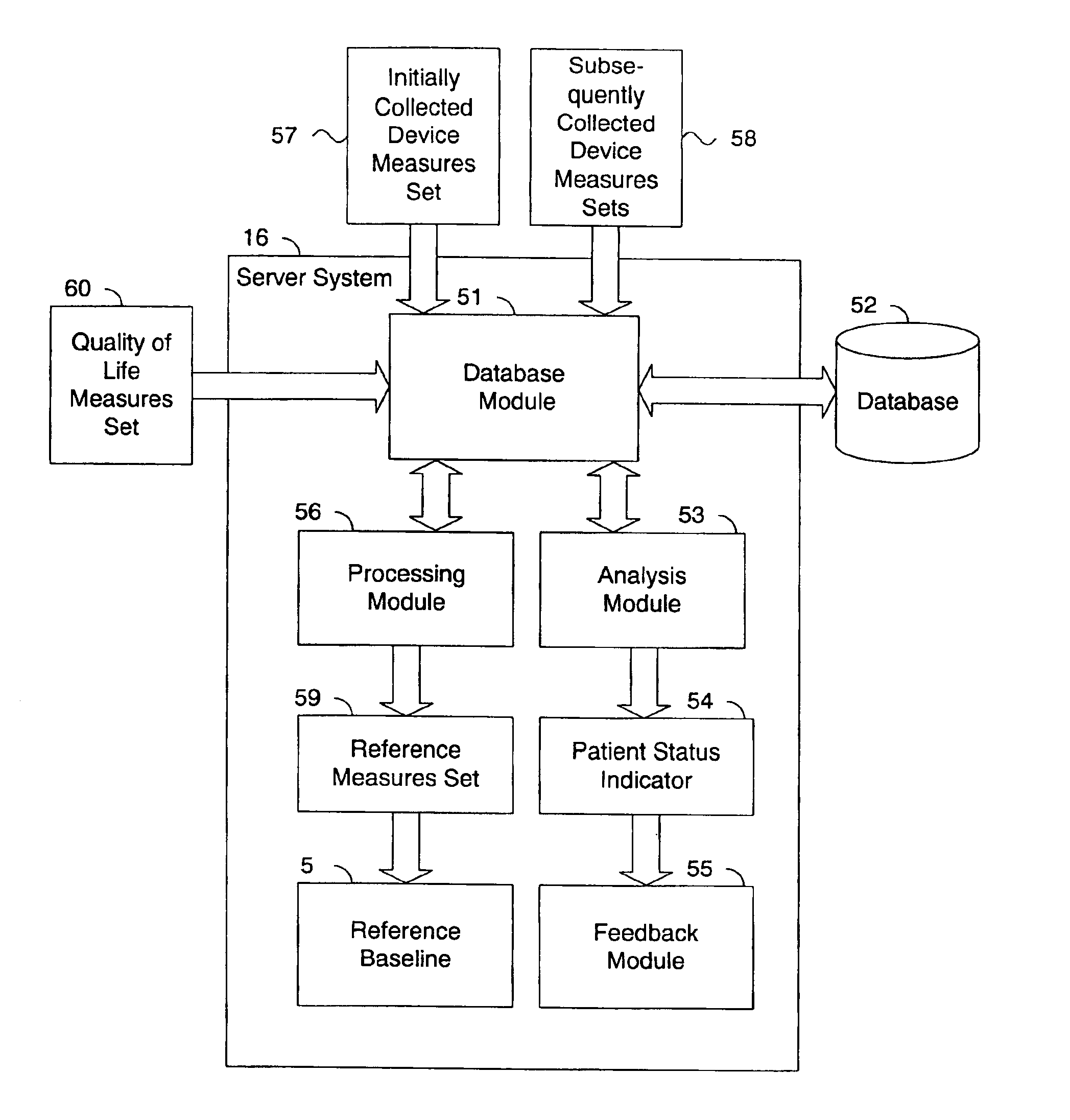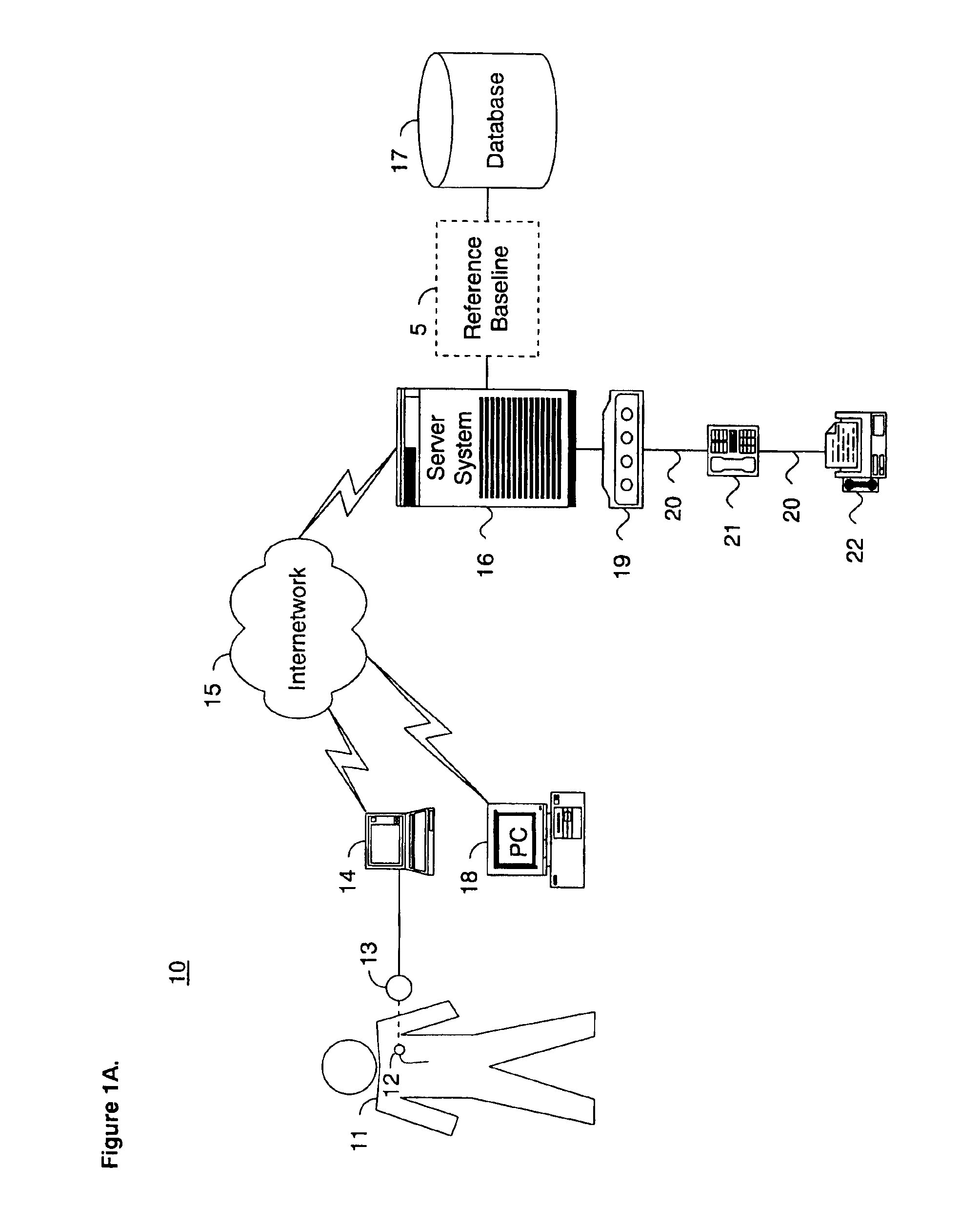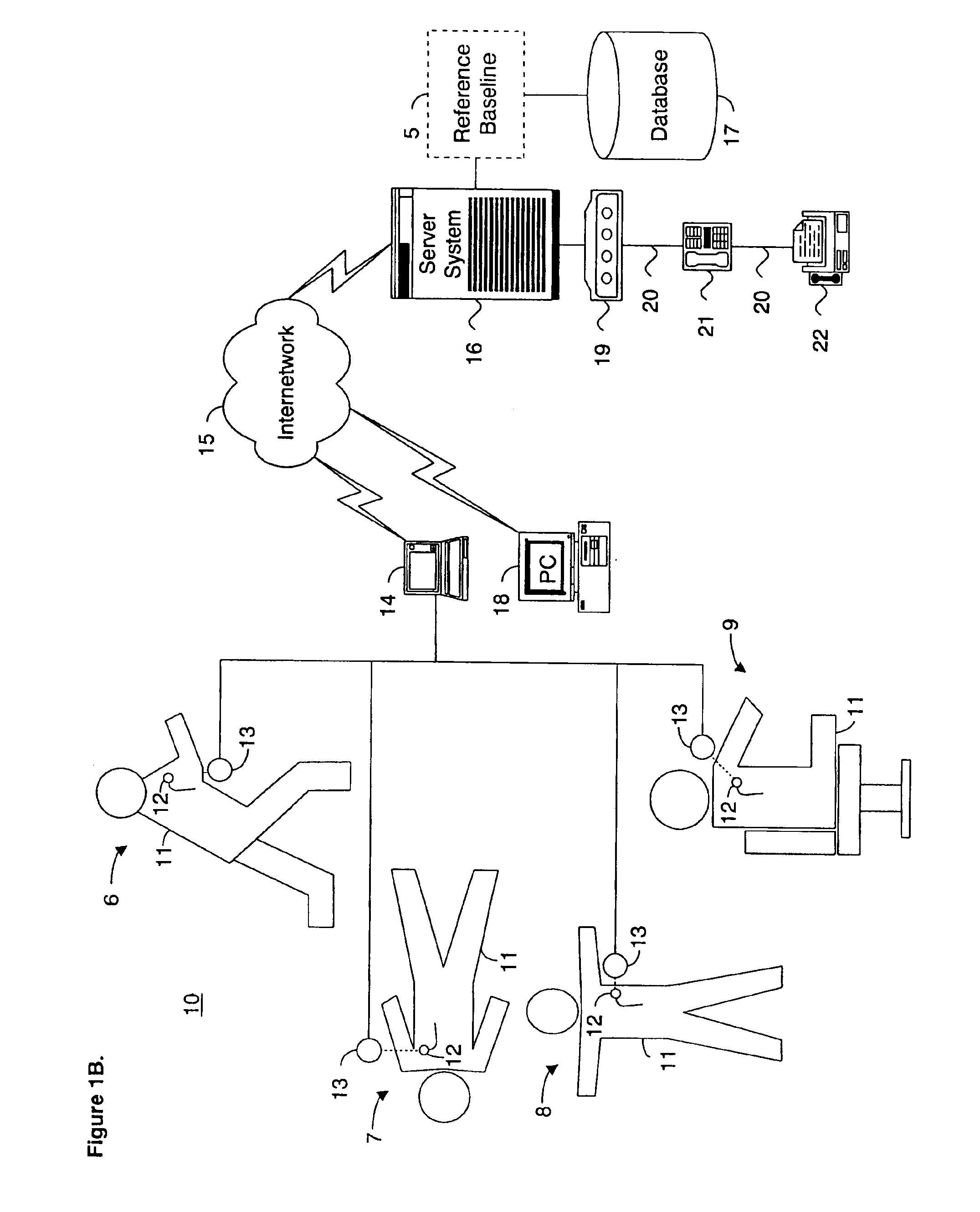System and method for determining a reference baseline of patient information for automated remote patient care
a patient information and reference baseline technology, applied in the field of automated data collection and analysis, can solve the problems of sudden cardiac death (scd), fatigue, dizziness, fainting, etc., and achieve the effects of improving patient care, improving legal responsibility chronicling, and increasing the accuracy of remote patient car
- Summary
- Abstract
- Description
- Claims
- Application Information
AI Technical Summary
Benefits of technology
Problems solved by technology
Method used
Image
Examples
Embodiment Construction
[0031]FIG. 1A is a block diagram showing a system 10 for determining a reference baseline 5 of patient status for an individual patient 11 for use in an automated collection and analysis patient care system in accordance with the present invention. An automated collection and analysis patient care system suitable for use with the present invention is disclosed in the related, commonly-assigned U.S. Pat. No. 6,312,378, issued Nov. 6, 2001, the disclosure of which is incorporated herein by reference. A patient 11 is a recipient of an implantable medical device 12, such as, by way of example, an IPG or a heart failure or event monitor, with a set of leads extending into his or her heart. Alternatively, subcutaneous monitors or devices inserted into other organs (not shown) without leads could also be used. The implantable medical device 12 includes circuitry for recording into a short-term, volatile memory telemetered signals, which are stored as a set of collected measures for later r...
PUM
 Login to View More
Login to View More Abstract
Description
Claims
Application Information
 Login to View More
Login to View More - R&D
- Intellectual Property
- Life Sciences
- Materials
- Tech Scout
- Unparalleled Data Quality
- Higher Quality Content
- 60% Fewer Hallucinations
Browse by: Latest US Patents, China's latest patents, Technical Efficacy Thesaurus, Application Domain, Technology Topic, Popular Technical Reports.
© 2025 PatSnap. All rights reserved.Legal|Privacy policy|Modern Slavery Act Transparency Statement|Sitemap|About US| Contact US: help@patsnap.com



